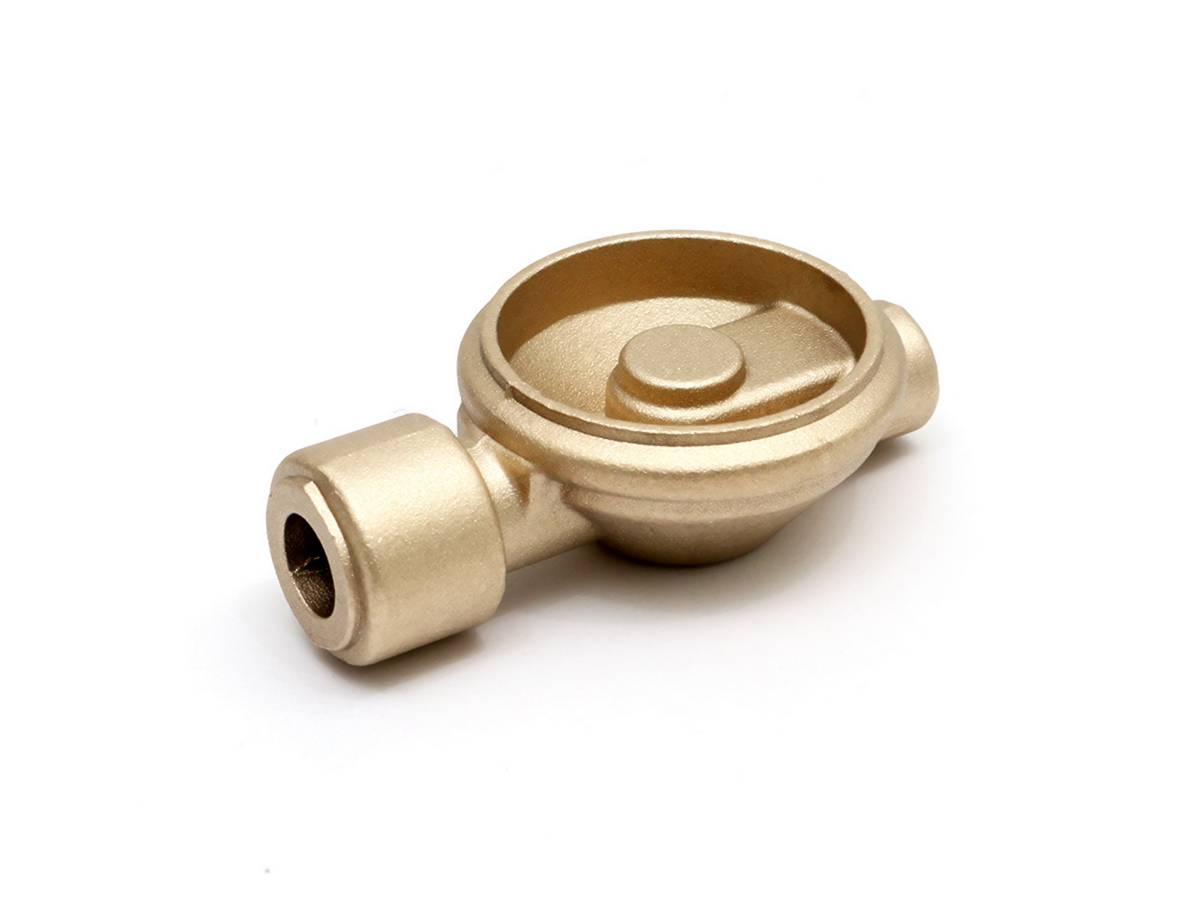Robust and Reliable: Gravity Casting’s Role in Energy Industry Component Manufacturing
Introduction
The energy industry’s relentless demands – from 500-bar subsea pressures to 800°C thermal cycling – require manufacturing solutions that combine precision with durability. Gravity casting technology delivers components with 0.2% porosity rates, critical for nuclear containment systems and wind turbine hubs where failures cost millions.
This proven method enables complex geometries in 3-100mm wall thicknesses, outperforming traditional casting in material utilization. Recent advancements allow custom alloy integration for extreme environments like geothermal brine and hydrogen storage.
The Science of Gravity Casting
Achieving defect-free castings requires mastering four critical phases:
Mold Engineering
Permanent steel molds undergo 300-400°C preheating (ASTM A681) to prevent thermal shock
Vacuum-assisted systems maintain <5 mbar chamber pressure, achieving 95% fill efficiency
Modular designs enable ±0.15mm dimensional accuracy across 2-ton castings
Melt Preparation
Aluminum alloys superheated to 710±10°C (monitored via IR pyrometers)
Titanium melts controlled at 50°C above liquidus to prevent β-phase embrittlement
Degassing reduces hydrogen content to <0.12ml/100g (EN 10204 3.1 certified)
Controlled Pouring
Tilt-pour systems maintain 15-25° pouring angle for laminar flow
Real-time X-ray monitors detect oxide inclusions exceeding 0.3mm
Directional Solidification
Water-cooled copper chills create 20°C/cm thermal gradients
Microporosity reduced to 0.15% through eutectic modification
Case Study: Offshore valve bodies produced via this protocol passed API 6A PSL 3 testing with zero defect rejections.
Material Selection Matrix
The energy sector demands materials that withstand unique operational stresses. Below is our engineered material portfolio with validated performance data:
Material | Mechanical Properties | Thermal/Chemical Performance | Energy Applications |
|---|---|---|---|
- Yield: 830 MPa - Hardness: HV 340 - Fatigue limit: 500 MPa (10⁷ cycles) | - Corrosion rate: 0.0015 mm/yr (ASTM G31) - pH resistance: 0-14 - Hydrogen embrittlement threshold: 150 ppm | - Geothermal wellheads - Hydrogen storage tanks - Subsea Christmas trees | |
- UTS: 290 MPa - Elongation: 8% - Specific stiffness: 26 GPa·cm³/g | - Thermal conductivity: 150 W/m·K - CTE: 21.4 μm/m·°C - Salt spray resistance: 1000+ hrs | - Wind turbine hubs - Solar receiver frames - Nuclear coolant piping | |
- Creep strength: 550 MPa@700°C - Stress rupture: 100h@815°C - Hardness: HRC 45 | - Oxidation limit: 980°C - Sulfidation resistance: 0.03 mg/cm²·h - CO₂ corrosion rate: <0.01 mm/yr | - Gas turbine combustors - Supercritical CO₂ turbines - Oil refinery valves | |
- PREN: 35.5 - Yield: 550 MPa - Impact toughness: 100 J@-40°C | - Chloride resistance: >100,000 ppm - H₂S threshold: 0.3 bar partial pressure | - Offshore risers - Hydraulic fracturing pumps | |
- Wear resistance: 0.32 mm³/N·m - UTS: 320 MPa - Brinell hardness: 120 HB | - Thermal cycling: -50°C↔300°C (500 cycles) - Erosion rate: <0.1 mg/cm² | - Engine blocks - Drilling tool housings |
Surface Engineering Innovations
1. Electropolishing
Function: Removes micro-imperfections through anodic dissolution, achieving mirror finishes. Performance:
Reduces surface roughness from Ra 1.6μm → Ra 0.4μm
Increases corrosion resistance to 5,000+ hours in salt spray (ASTM B117)
Enhances flow efficiency by 18% in hydraulic systems Applications:
Precision-machined hydraulic valve bodies
Medical-grade nuclear reactor components
2. Thermal Barrier Coatings (TBCs)
Function: Insulates substrates from extreme heat via ceramic-metallic layered structures. Performance:
Lowers surface temperature by 300-400°C
Withstands 1,200°C continuous operation (8% YSZ coatings)
Reduces thermal stress cracking by 65% Applications:
Gas turbine blades
Exhaust manifolds in combined-cycle power plants
3. Sandblasting
Function: Projects abrasives to clean surfaces and induce compressive stress. Performance:
Increases fatigue life to 2.5×10⁷ cycles (vs. 1.8×10⁷ untreated)
Achieves Sa 2.5 cleanliness (ISO 8501-1)
Generates -450 MPa residual compressive stress Applications:
Wind turbine base plates
Offshore platform structural components
Competitive Advantages
Gravity casting outperforms conventional manufacturing methods in critical metrics:
Parameter | Gravity Casting | Sand Casting | Die Casting | Investment Casting |
|---|---|---|---|---|
Tooling Cost | $18K-50K | $5K-15K | $80K-200K | $25K-70K |
Dimensional Tolerance | ±0.15mm | ±0.5mm | ±0.05mm | ±0.1mm |
Production Cycle | 4-12 hours | 24-72 hours | 1-5 minutes | 48-120 hours |
Max Part Weight | 2,000 kg | Unlimited | 45 kg | 100 kg |
Material Utilization | 95-98% | 60-75% | 80-85% | 70-80% |
Key Differentiators:
Complex Geometries: Produces internal channels up to 150+ configurations unreachable by die-casting
Material Flexibility: Compatible with 40+ alloys, including reactive metals like titanium
Sustainability: 100% recyclable molds vs. single-use sand molds
Data source: 2023 ASM International Casting Technology Report
Critical Production Protocols
Addressing key challenges in gravity casting requires systematic process control:
Issue | Root Cause | Solution & Standard | Result |
|---|---|---|---|
Gas Porosity | Hydrogen entrapment in melt | Vacuum degassing to <0.12 ml/100g H₂ (EN 10204 3.1) | Porosity ≤0.15% |
Hot Tears | Uneven cooling stresses | Directional solidification at 20°C/cm gradient | Defect rate ↓78% |
Mold Erosion | High-velocity metal impact | Boron nitride coating (50μm) on mold surfaces | Mold life ↑3X |
Dimensional Warpage | Thermal contraction mismatch | Post-casting stress relief at 250°C×4h (AMS 2772) | Tolerance ±0.15mm |
Surface Inclusions | Oxide film rupture | Tilt pouring at 18-22° angle with ceramic filters | Inclusion size <0.3mm |
Preventive Measures:
Real-time Monitoring: IR thermography detects ±5°C mold temp variations
Material Certification: Traceable mill test reports (EN 10204 3.2)
X-ray Inspection: Defects ≥0.3mm automatically flagged (ASTM E802)
Energy Sector Applications
Gravity casting delivers critical components across energy systems:
Nuclear: Reactor coolant pump impellers with 0.1mm dimensional accuracy
Wind: 15MW turbine hubs enduring 25-year fatigue cycles
Oil & Gas: X-mas tree bodies resisting H₂S corrosion at 150°C
Geothermal: Titanium valve bodies with pH 0-14 compatibility
Hydrogen: Storage vessels preventing 150ppm hydrogen embrittlement
Solar: Receiver frames with 150 W/m·K thermal conductivity
FAQs
How does gravity casting’s vacuum degassing achieve <0.15% porosity for nuclear components?
What Grade 5 titanium properties prevent hydrogen embrittlement in storage systems?
Which surface treatments extend wind turbine component fatigue life beyond 25 years?
How do thermal barrier coatings maintain integrity under 1,200°C turbine conditions?
What directional solidification parameters prevent hot tears in thick aluminum castings?

